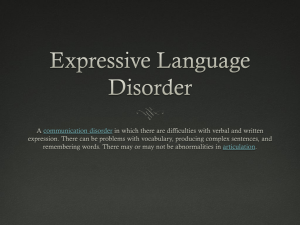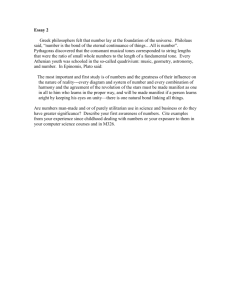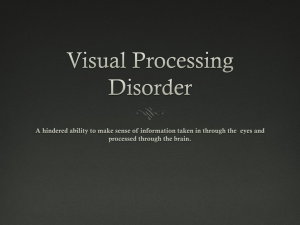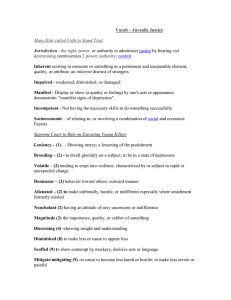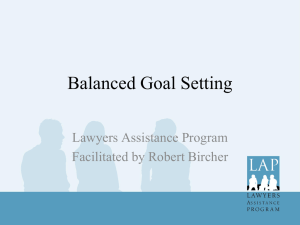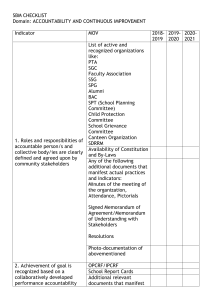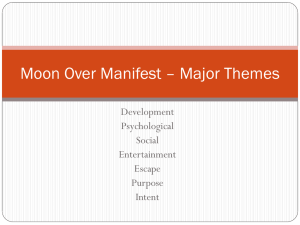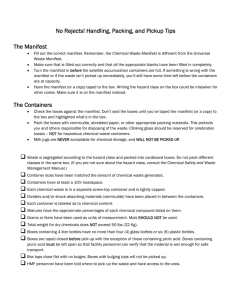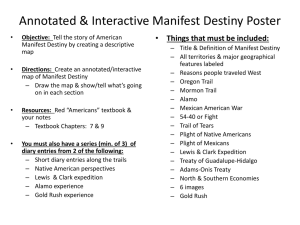Visual Processing Disorder
advertisement
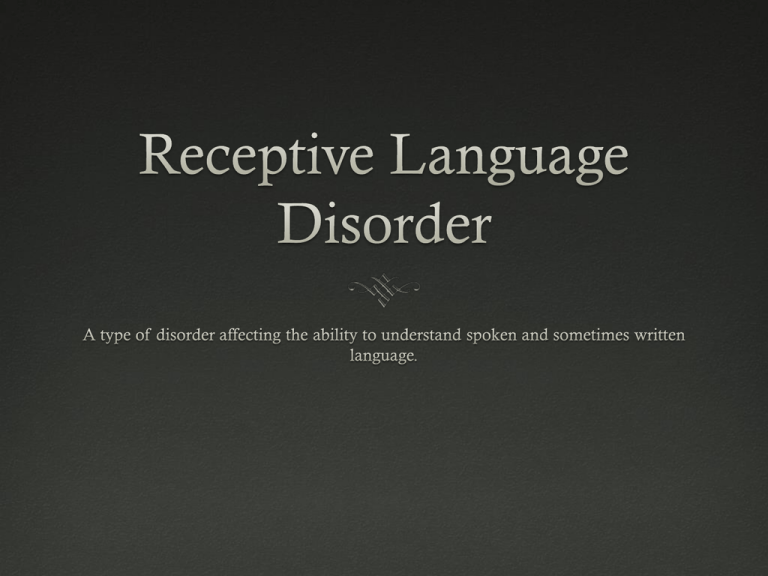
Characteristics Difficulty identifying words and their meanings Difficulty processing sentence structure Difficulty extending the meaning of words (association) Difficulty processing the density of the content of messages Limited vocabulary Stop & Jot: Based on the characteristics, which students come to mind? How does it manifest in the classroom? Classroom Strategies Difficulty retaining new information Use pictures, flash cards, and repetitions emphasizing important words by increasing volume of voice to highlight important words. Rehearse and continue to practice skills from previous lessons. Pre-teach vocabulary and concepts. Categorize words/concepts based on relationships. Chunk lesson content; summarize after each chunk. Use mnemonic phrase to help students remember key information. How does it manifest in the classroom? Classroom Strategies Unable to follow directions Give step-by-step instructions. Use shortened commands. Clarify and check for understanding. Use repetition. Use visuals of directions to which students may refer as needed. Give students freedom to walk up to the board and copy them down. How does it manifest in the classroom? Classroom Strategies Difficulty answering questions When reading stories, provide pictures and put emphasis on important words. Read questions before reading the text. Use marginal notes. Clarify what questions are being asked. Highlight or underline key points. Use tiered questions that lead to more complex questions. Scaffold student response. How does it manifest in the classroom? Classroom Strategies Unable to perform classroom tasks, such as writing to dictation or taking notes Chart important information. Count words in the sentence before writing. Dictate in short phrases. Use cloze activities or sentence frames. Utilize Powerpoint/Keynote presentations and provide a copy of slides, teacher’s notes, or notes from other students. Assign a note-taking buddy. Teach key vocabulary. Have students brainstorm by drawing or sketching. Then ask them to label it before writing. Use visual supports, such as pictures or diagrams. How does it manifest in the classroom? Classroom Strategies Poor analysis of texts requiring inferential reasoning, cause and effect, and predicting logical outcomes Use charting and graphic organizers (e.g., What information is given? What do I know from experience? What are my deductions, predictions, and inferences?). Scaffold processes through teacher think-alouds or student modeling. Relate new information to personal experiences. Use more pictures. Emphasize use of picture cues with text. Picture walk through new book or text prior to reading. How does it manifest in the classroom? Classroom Strategies Limited vocabulary; unable to identify relationships between words Use Compare and Contrast activities. Use Frayer Model for critical concept vocabulary (definition, characteristics, examples, and nonexamples). Use Venn Diagrams and graphic organizers. Work on categorizing activities or games. Build picture dictionaries or personal word books. Use visual or kinesthetic prompts for new vocabulary. Act it out and map it (synonym, antonym, illustration/charade and sentence). Build on word parts (root words, prefixes, and suffixes). Turn & Talk: * Which strategies have you tried and found successful? * Name a new strategy that you’d like to try on!
